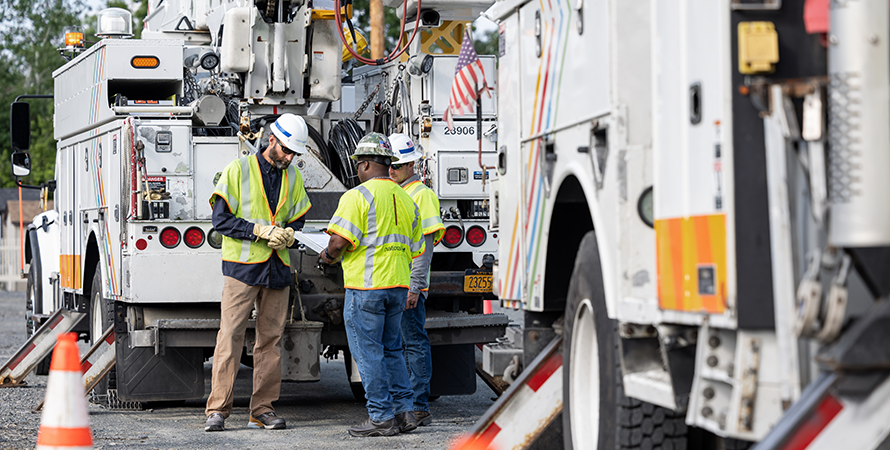National Grid Increases Staffing in Anticipation of Potentially Severe Storms in Eastern New York
Categories:

ALBANY, N.Y. — This summer’s weather trend of wet, stormy weather continues this week as National Grid is preparing to respond to severe storms tomorrow that could potentially include high winds, hail and tornado activity across the eastern New York region.
The company is putting its storm response expertise to use again this summer and increasing staffing and extending evening and overnight work shifts in anticipation of this next round of storms. The company has activated its comprehensive emergency response plan, including:
- Calling in outside resources and mobilizing field and tree crews.
- Pre-staging crews and materials in areas anticipated to be most severely impacted.
- Proactively reaching out to elected, municipal and emergency management officials to keep them updated on our preparations and provide safety information.
- Reaching out directly to customers through traditional and social media, email and texts and on our website to provide safety information and to urge them to be prepared.
- Conducting outbound calls to life support and critical facility customers to ensure they are prepared.
As always, National Grid remains committed to public safety and is prepared if the storm impacts the energy delivery system. The company also encourages customers to keep safety a priority with the following reminders:
Electricity & Generator Safety
- If a power outage occurs, customers can notify National Grid online to expedite restoration.
- Generators used to supply power during an outage must be operated outdoors to prevent the buildup of deadly carbon monoxide. Before operating a generator, be sure to disconnect from National Grid’s system by shutting off the main breaker, located in the electric service panel. Failure to do this could endanger our crews and your neighbors.
- Customers who depend on electrically powered life support equipment, such as a respirator, should register as a life support customer by calling National Grid at 1-800-642-4272. In a medical emergency, always dial 911.
- Keep working flashlights and an extra supply of batteries in your home and be sure to charge all electronic devices before the storm.
- Please use caution when driving near emergency responders and crews restoring power.
- Be sure to check on elderly family members, neighbors and others who may need assistance during an outage.
Safety Near Downed Power Lines
- Always use extreme caution near downed power lines and wires, and always assume that they are carrying live electricity.
- Never touch a person or an object that is in contact with a downed line, as electricity can pass through to you.
- Take caution when approaching fallen trees, which could have power lines caught in them.
- Remember that water can conduct electricity. If you see a line down in a puddle or flooded area, avoid contact with the water to prevent risk of shock.
Learn more about downed power line safety at our website and view our downed power line safety video.
Stay Informed and Connected
- Customers with active electricity accounts who text ‘REG’ to 64743 can have personalized alerts sent to them via text, email or phone call when we detect an outage on their properties.
- Customers also can text ‘OUT’ to 64743 to report an outage.
- For real-time power outage information, online outage reporting, and in-depth storm safety information, visit National Grid’s Outage Central website. Customers who create an online profile also can sign up for email alerts.
- Customers can read the latest company news, check outage status and report an outage by using the National Grid app.
- Visit our website: www.nationalgridus.com, follow us on Twitter and friend us on Facebook.
About National Grid
National Grid (NYSE: NGG) is an electricity, natural gas, and clean energy delivery company serving more than 20 million people through our networks in New York and Massachusetts. National Grid is focused on building a smarter, stronger, cleaner energy future — transforming our networks with more reliable and resilient energy solutions to meet state climate goals and reduce greenhouse gas emissions.
Media Contacts
Related News
